Testimonials

Prior to adopting PSI, I rarely talked to my colleagues about pedagogy, other than my mentor. PSI promotes common planning and pedagogical discussions on a frequent basis, so that we can be the best teachers for our students.
Tantanya Hodges |
High School Science Teacher |
STEM Academy in East Orange, NJ
Tanny Hodges is a high school science teacher at the STEM Academy in East Orange, NJ. Tanny received her physics and chemistry teacher certifications through the PSI teacher endorsement program. She has been teaching PSI for six years, first in the Paterson school district and currently in East Orange. In 2014, STEM Academy became one of the top 20 schools in NJ for participation in AP Physics.
What was the biggest adjustment you made in your teaching when you switched to using PSI?
The biggest adjustment that I made was in my pedagogy. Since switching to the CTL methods, I stopped giving soft grades. When I first started teaching, my assessments were worth 40% and homework, class work and participation were worth 60% of their overall grade. Basically if my students put forth a lot of effort and learned very little content, they passed my class. How well did I prepare them for college?
What is the most positive outcome you have seen with your implementation of PSI?
Through the use of various forms of immediate response software, I’m now able to determine if students are comprehending the lesson prior to an assessment. This allows me to make informed decisions on whether to re¬teach or assess and move forward.
What do parents think of PSI and why?
In the time in which we live, parents are a huge deterrent in children receiving a quality education. The occasions when a teacher's judgement is challenged is increasing at an alarming rate. So, getting parents to buy-¬in to the fact that I will no longer grade classwork, homework and participation is a hard pill to swallow. Many parents want their child to be graded on any and everything done for a class, regardless if it was done cooperatively. Putting forth effort will lead to acquisition of content knowledge, therefore only the acquisition of knowledge will be graded, in the form of test and quizzes. It is the only way to be sure that students are prepared high stakes tests.
What’s the difference between PSI and other curricula?
The difference between PSI and other curricula is that it is not as prescriptive. PSI promotes teacher creativity and editing, to personalize the content. I have been in professional developments with curriculum companies, were I was told exact questions to ask my students to “promote understanding.”
What advice do you have for teachers adopting PSI now?
My advice for new teachers is to be open. Districts are always looking for the mythical company that is both rigorous and meets the needs of all learners. Nothing is perfect, but you can learn something from every PD you are forced to attend. PSI is created by teachers and revised by current classroom teachers. CTL asks for feedback and makes changes to the curriculum frequently to better meet the needs of the students.
Other Comments:
Prior to adopting PSI, I rarely talked to my colleagues about pedagogy, other than my mentor. PSI promotes common planning and pedagogical discussions on a frequent basis, so that we can be the best teachers for our students. The PSI teachers in my building try our best to in synch, so that our students can work together, and seek help from any of us; creating a whole department learning community.


